“Union Steamship Company" S.S. Maori (II) 1907 to 1951
Please Note: Firefox, iPhones, iPads & some other Search Engines may not be suitable
Use Internet Explorer & Old Google for this Web Page to load perfectly!
Click the
logo above to reach the ssMaritime FrontPage for News Updates
Maritime Historian, Cruise‘n’Ship Reviewer, Author & Lecturer
Please Note: All ssmaritime and my other related ssmaritime sites are 100%
non-commercial and privately owned sites. Be assured that I am NOT associated
with any shipping companies, cruise or travel agencies or any other
organisations! The author has been in the passenger shipping industry since May
1960 and is now retired, and has loved writing articles on classic liners and
cruise ships in order to better to inform cruise and ship enthusiasts for their
pleasure. But I have now ended due to age and poor health!
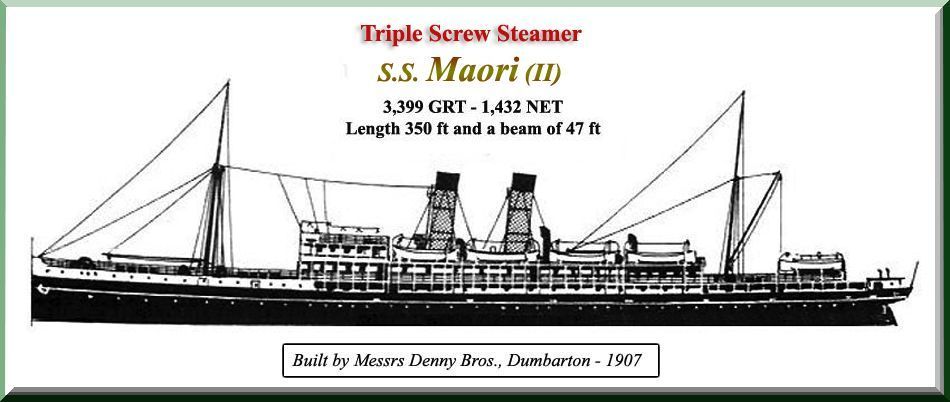
Sold to become: S.S. Hwa Lien in 1946
Initially the “Union Steamship
Company” (USSCo) of
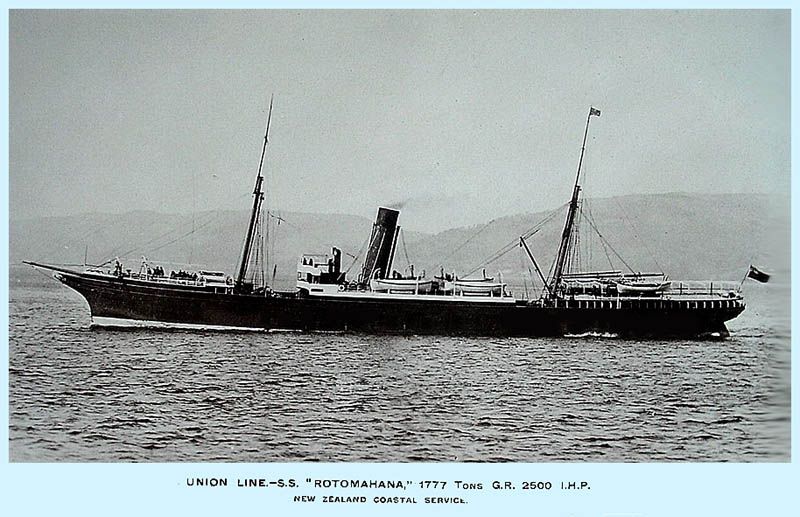
A postcard of the S.S. Rotomahana, which was a fine looking ship for her time
A New Inter-Island Ferry
Ordered and Built:
Thus a new ship was beautifully designed and
ordered to be built by “William Denny & Bros” at
Launching of the S.S.
Maori (II) & voyage to Australia
On November 11, 1906, came the great day for the new vessel to be named and launched in the presence of the Prime Minister of New Zealand, Sir Joseph Ward, but it was his wife, Lady Ward who actually named the ship “Maori,” and then the Prime Minister officially launched the S.S. Maori.
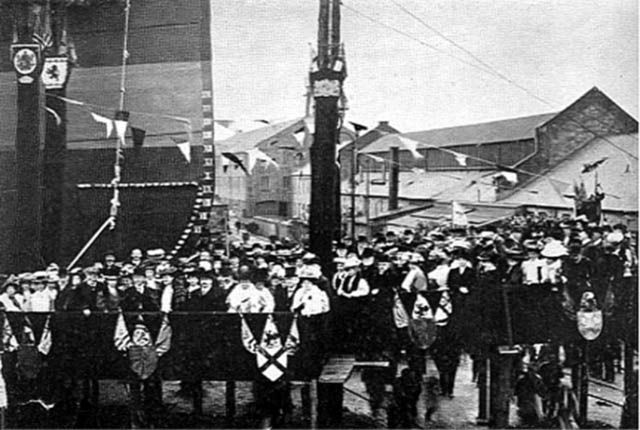
The Maori had just been named by Lady Ward, and is about to be launched by the Sir Ward
But sadly as the Maori entered the river, she went straight across to the opposite bank of the river and crashed into it, thankfully there was no damage and she was towed to her fit-out berth. Her fitting out and completion took almost another nine months, considering she was to be an Inter-Island Ferry she was certainly sumptuously appointed with beautiful Saloons and grand Dinning Rooms, venues up to standard of Trans Atlantic Ocean Liners and spacious and well appointed accommodations! Finally, with the S.S. Maori having been completed she headed out for her sea trials, and sadly during the trial somehow she ran aground and was forced to return dry-dock for repairs to her hull.
With repairs completed she departed for her
second trial run on September 19, 1907 and unbelievably this time the Maori
collided at 11.45 am with, and sank the S.S. Kintyre being a small coastal
vessel. The following is a story that kindly sent to me by a supporter of
ssmaritime, Mr. Conall Fyffe of
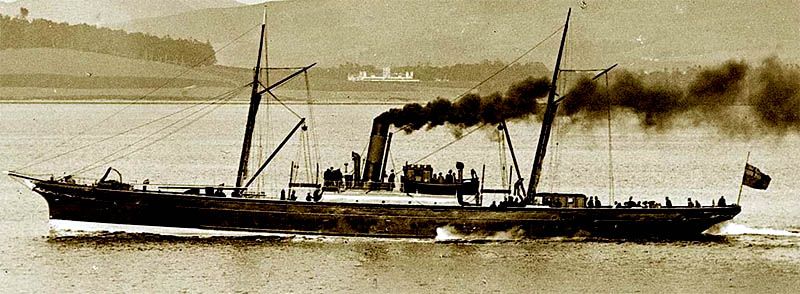
The S.S. Kintyre
“The SS Kintyre departed
Apparently, the bow of the Maori smashed with great force into the starboard quarter of the S.S. Kintyre, just at the after hatch and in close proximity to her machinery, which meant that water poured into the steamer’s side extremely fast. With the ship flooding so rapidly the Kintyre settled down by the stern within minutes. It was soon realized that she would not remain afloat for long, and thankfully, the two ships remained locked long enough to enable the Kintyre just above water and the crew of the stricken ship were able to scramble up the side of the Maori with the aid of rope ladders thrown down to them by the crew on the larger ship.”
The S.S. Maori returned to dry-dock for
repairs to her bow and her bow rudder. Believe you me, there were quite a
few people praying, “Please God let all tragic events come to end!”
Thus, was it all finished, well not quite, for there would be just one more
event to come! At the commencement of her delivery voyage to
Her delivery voyage from
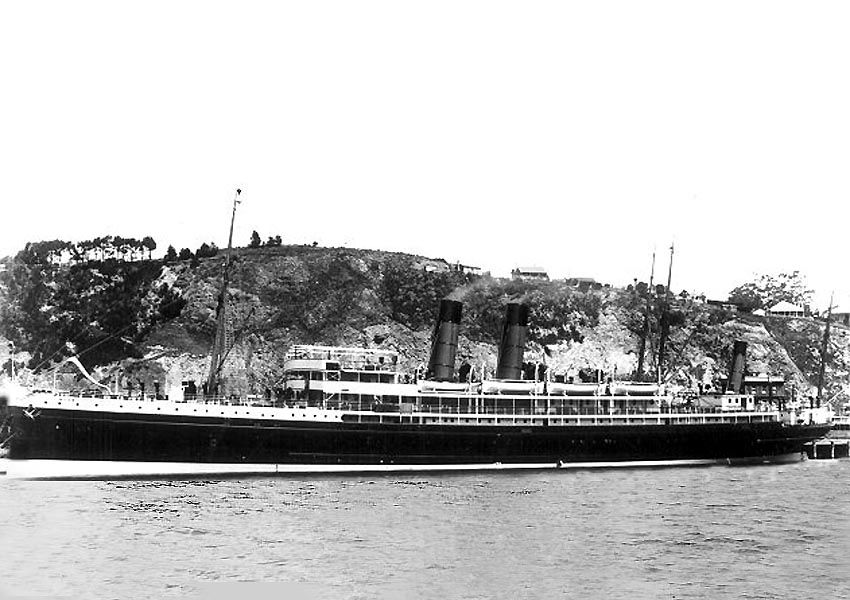
A Fine
view of a beautiful ship, the S.S. Maori having been delivered to her owners in
Port Chalmers (
After all the official speeches, and
formalities, the ship was opened to invited guests and the media, and later to
the public. She the headed for her homeport
Named After an Earlier
Ship:
For interest, the “Maori” was named after one of the earlier ships in the “Union Steam Ship Co” founding fleet, being and the S.S. Maori (I) built, which was built in 1875, and she was a mere 173.57 tons and accommodated just 20 passengers. Besides having a Compound Steam-Reciprocating inverted direct acting engine, she also had two masts, thus she was schooner rigged and could sail under canvas.
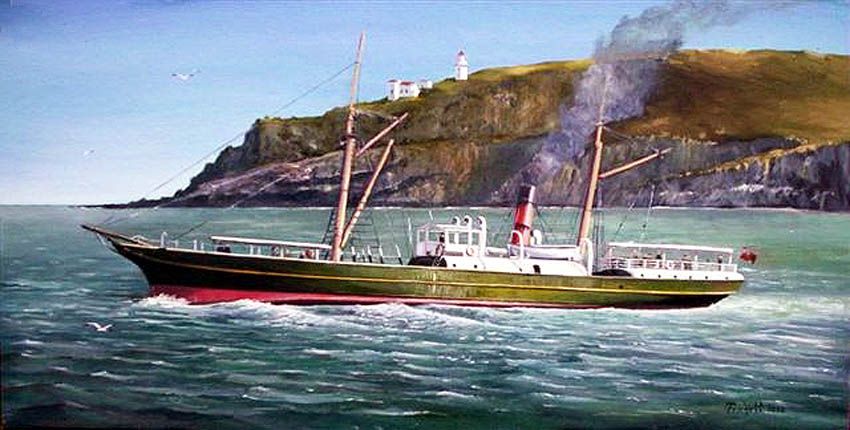
The
Schooner, S.S. Maori (I) is seen n this painting departing
SS Maori (II)
Mechanical Details:
She was fitted with three sets of Parson’s steam turbines that worked up to 5,859 horsepower. The single high-pressure turbine was brought into action when under weight, whilst the two low-pressure turbines (port and starboard) in use in port and also at sea. There were two double-ended boilers 20’6” over the plates, and 18 corrugated furnaces of 3’9” in diameter. She had three - three bladed propellers, each being 5’4” in diameter, with a 4’7” pitch. As built her boilers were coal fired, but in 1923 she was converted to become oil fired, making her a cleaner and a less expensive ship to operate.
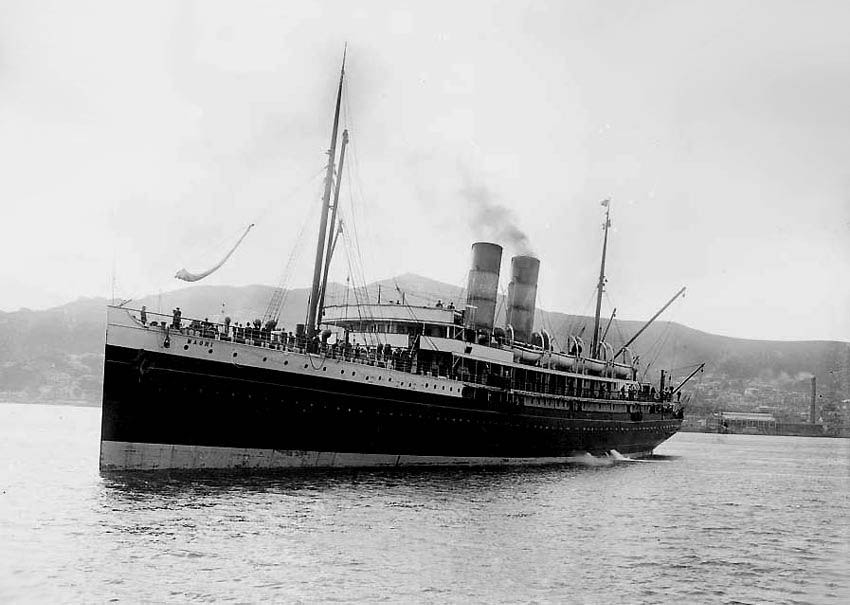
The S.S. Maori is seen here having just commenced her inter-island services in December 1907
One of the main reasons this fine new ship was
ordered, was due to the anticipation of rapid increase passenger traffic,
mostly due to the completion of the new direct railway line between
S.S. Maori’s
Interiors:
With the Maori having arrived she was opened
for inspection and according the newspapers, both the public and officials were
amazed by the luxurious appointments, both in Saloon (First) and Second
Classes. However, the news of what had occurred in
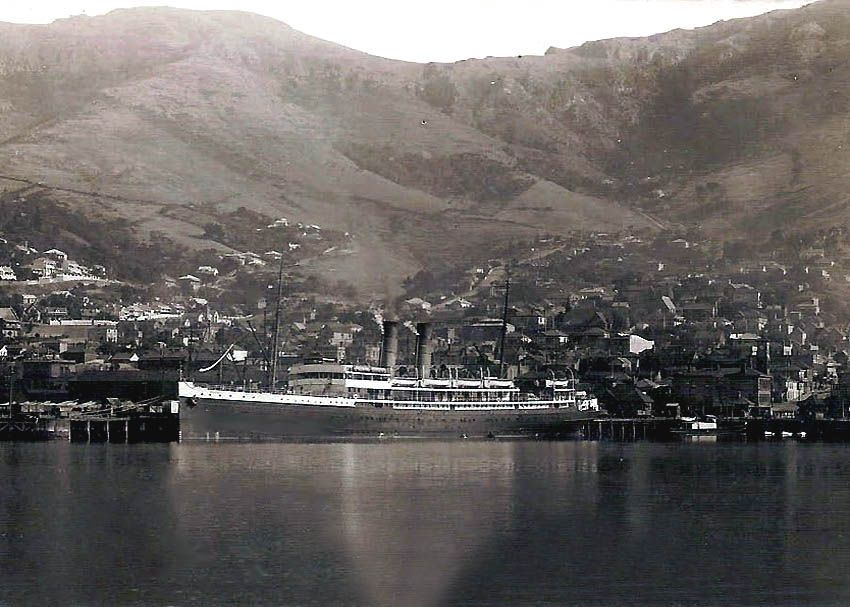
The elegant looking S.S. Maori is seen berthed at Lyttelton
Photograph © Bert
Bonnington
The appointments of the S.S. Maori are calculated to intensify at once the feeling luxurious appointments and confirm the sentiment of accommodations have cosy comforts! The Maori has five Decks, these being; Navigation Deck, Upper Promenade Deck, Lower Promenade Deck. Main Deck and Saloon Deck.
Saloon Class:
Her spacious Music Room is a veritable symphony in old gold and blue. There are comfortable beautifully upholstered lounges that invite relaxation, whilst the grand piano foreshadows unending possibilities for the evening. The magnificent grandiose Dinning Room is reached by a grand Stairwell, featuring the finest of timbers and superbly carved pieces. The Dinning Room itself was of special significance, as it was upholstered in crimson and decorated in subdued artistic tints of green and white and gold. A grandiose dome which was pierced and garnished with stained glass rose up right through to the Upper Promenade Deck into the Music Lounge, where there was a balustrade and passengers could look down into this fine venue. The Smoke Room was appointed for sheer comfort and relaxation, its furnishings comprised green covered tables of a Sheraton designed lounge chairs with crimson upholstering as well as comfy wicker chairs with downy cushions.
Cabins were superbly equipped and all were spacious. Special attention had been given to lighting and ventilation. There was even a special Bridal Chamber! Accommodations available were single bed cabins as well as twin bedded cabins. Some cabins may have an additional fold away upper berth for an addition guest or child. The Maori very soon became well known for its luxurious bathrooms and “marvellously fashioned lavatory” which were available all over the ship, and always close to accommodations, and were always spotless!
Second Class:
It should be said from the outset, that this class was like Saloon, and it was superbly provided for in every possible way! The delightful Saloon was superbly upholstered in blue, russet and gold, and richly carpeted and was the perfect venue for a drink or some evening entertainment before or after dinner. Their cabins were again very spacious indeed, with all beds on board having spring mattresses and superior bed coverings.
Her Usual Schedule would
be:
S.S. Maori would depart
She would depart Lyttelton at 8.30 pm and
arrive at
PS: During her
regular service as stated above; she would arrive at Lyttelton at 6.40 am on
alternate days, and the Maori would depart for
Record Breaking S.S.
Maori:
However, having been delivered, she very
quickly set a few records within the first month of her arrival in
In December 1907 the Maori sailed from Lyttelton Heads to the Wellington Heads in eight hours and eighteen minutes, reducing the 175 miles service by more than one hour, thus setting a record!
Then soon thereafter on December 27, 1907 she set a new record of a mere eight hours and twenty three minutes from wharf to wharf, this is a record that would not be broken for fourteen long years.
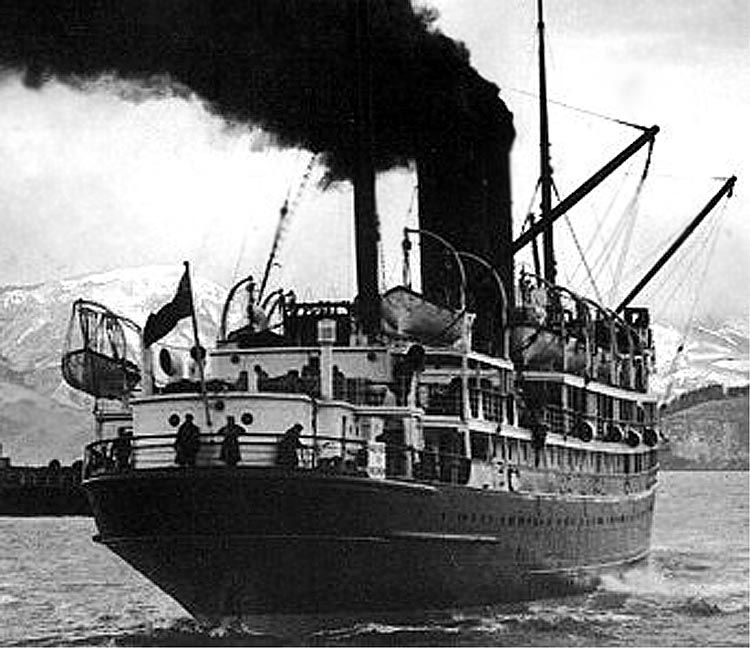
S.S. Maori is seen leaving Lyttelton Heads for a record breaking voyage to Wellington Heads in December 1907
The photographer is unknown - Please read the Photo Notes at the bottom of this page.
In July 1913 the 4,435 ton S.S. Wahine
arrived in
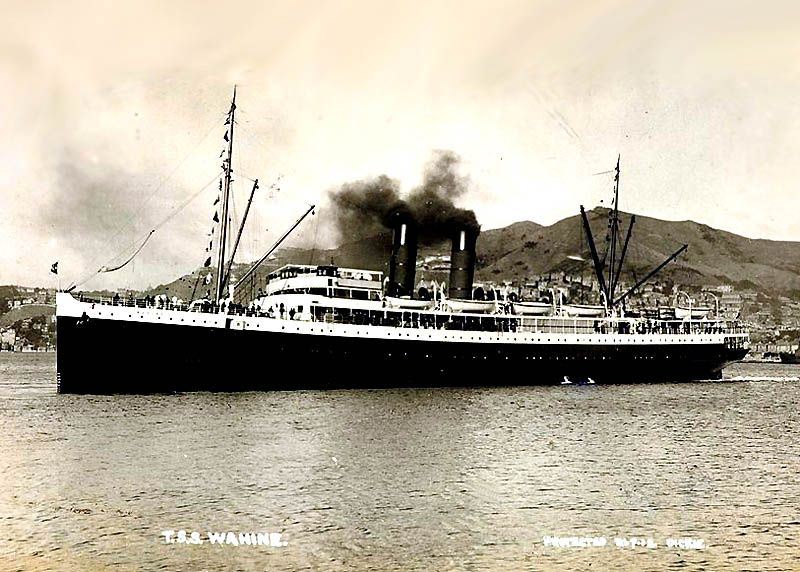
An USSCo postcard of the S.S. Wahine (I)
Both ships made perfect connections with
railway expresses in the North and
Work was
done mid in 1916 on that was known as the “Lyttelton Wool Jetty”
but upon completion it was officially known as the “
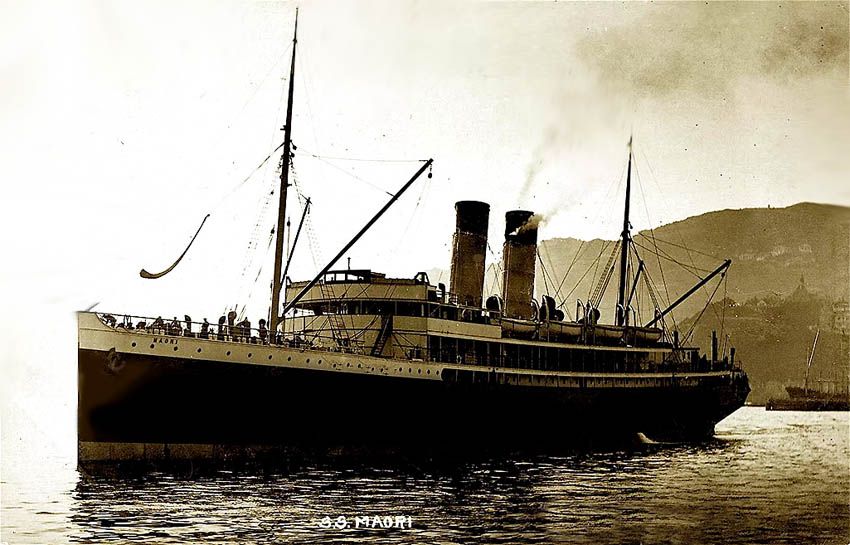
Another postcard of the S.S. Maori
Provided by Dr. David
McMahon, Snr - NZ
The Maori remained a popular ship and together with the Wahine they operated the perfect Inter-Island service. However, in 1916 everything changed due to World War One, as there was a huge crew shortage, as most were now used on the larger troop ships, there was a massive crew shortage, her services were temporarily cancelled, but services were restored as soon it was possible.
World War One:
The S.S.
Maori did make an excellent contribution to the war effort, as she transported
military material, as well as armed forces and countless passengers between
Post War I:
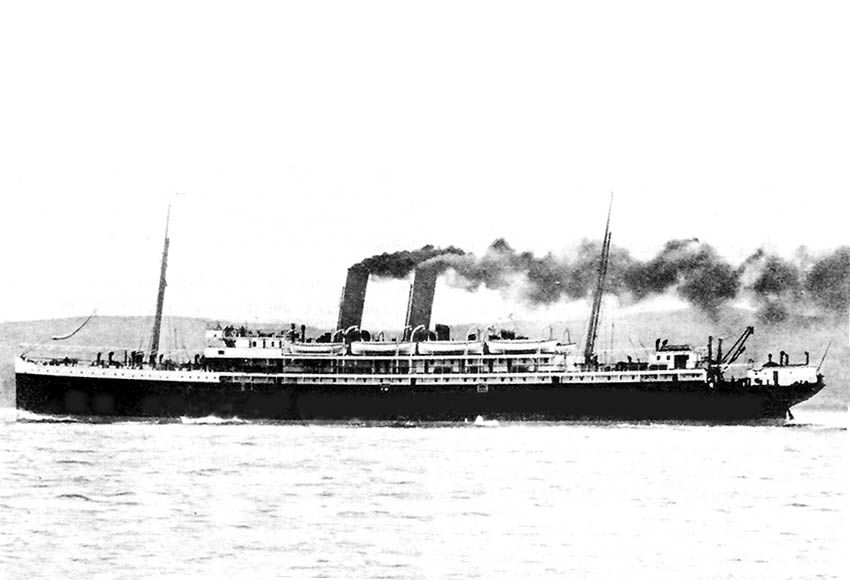
The S.S.
Maori is seen departing
The Maori was kept very busy on the Inter-Island service from 1907 right through to 1931, when she was laid up when the Rangatira arrived, but she was kept in reserve and was then brought back into regular service during World War II, in order to replace the Wahine, as she had been commissioned to serve as a troop ship.
The Maori continued her regular sailings, but
suddenly on January 6, 1944 she was laid up at
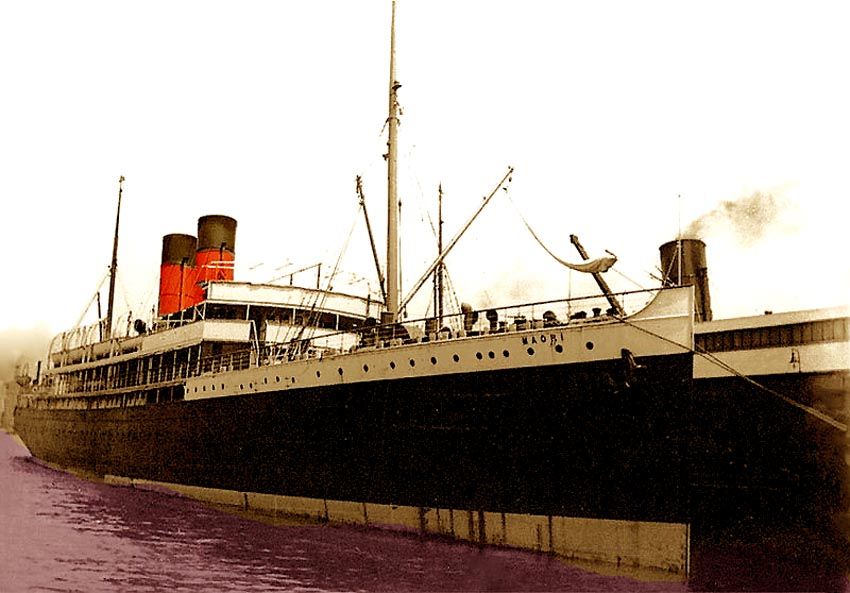
The SS Maori is seen after her conversion to oil burning but she is seen during a lay up situation
This photograph was partially colourised by the sender.
Photograph provided by Jan
Bouwman
Sold to become the S.S. Hwa Lien:
S.S. Maori remained idle for the next two and a
half years, then in June 1946 she was sold to the Shanghai based “United
Corporation of China Ltd” (UCC) for £100,000, and she was renamed
“Hwa Lien” meaning - “China Connection.” The company
obtained her to operate her on the
Her hull was painted black with red boot
topping and a thin white ribbon around her hull, her funnels were now black
each having a broad white band. The now Chinese owned S.S. Hwa Lien departed
Of course she was built as a coal fire ship,
and only converted to oil firing in 1923. It was expected that she would sail
under her own power to
Having arrived, she refuelled and the ship was
stocked up and she departed and headed north and she headed for her new
homeport and she much have called into a number of port on the way to Shanghai
China to refuel, but no information was provided by the company.
The S.S. Hwa Lien departed Shanghai on
December 29, 1946 and at the outset she intended to sail direct to Sydney, but,
within two weeks the ship was running drastically short of food, water and
other supplies, thus on January 10, 1947 the ship radioed and advised that the
ship had to divert to Darwin to obtain supplies, and she arrived there on
January 14. S.S. Hwa Lien just happened to be the very first passenger ship to
visit the
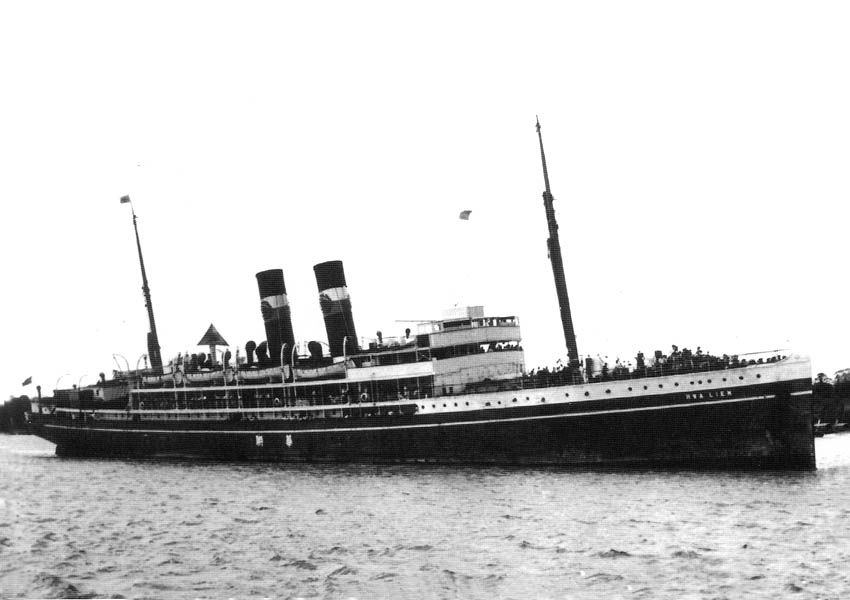
S.S. Hwa
Lien is seem sailing along the
The Hwa Lien departed
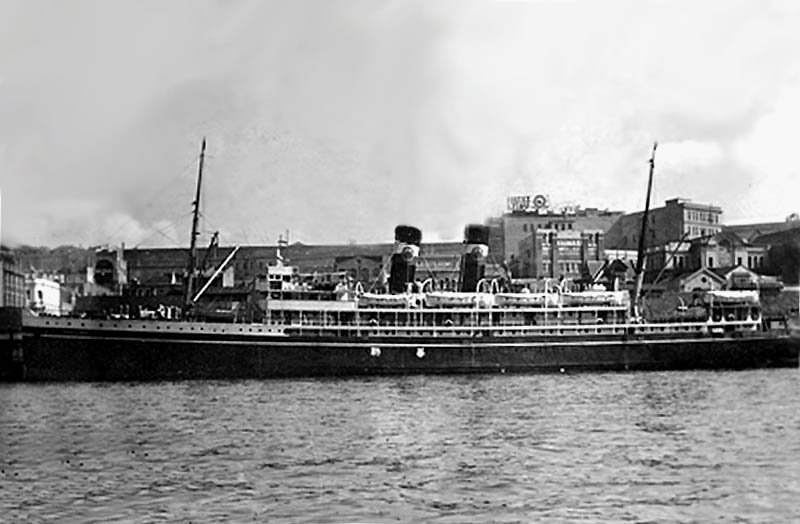
SS. Hwa
Lien is seen berthed in
In Sydney all her 474 passengers disembarked and they were more than pleased to have arrived, but were delighted to get of the ship, which some called the ship from hell, even though her public rooms may have been beautiful, but there was little to no service, the food seemed to be constantly rationed and the quality was from “very poor” to “terrible.” In addition, the little ship pitched and rolled so violently for days on end during her voyage.
The next day, January 29, 1947 the S.S. Hwa
Lien departed an empty ship, except for her relatively small crew, limping port
by port for
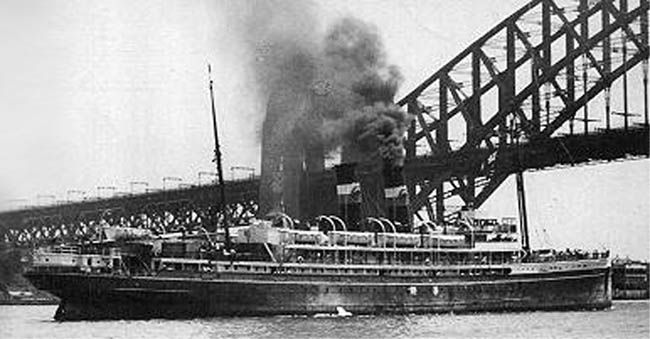
Here we
the Hwa Lien for the final time as she departs
As the S.S. Hwa Lien returned to
1950; She was sold in 1950 to the “Chung
Lien Steam Ship Company” but they laid her up in
On January 13, 1951 a hurricane his and the
Hwa Lien was dragged by her anchors, which saw finally sinking. In May, she was
raised and was sold to the breakers. This saw all her superstructure
demolished, but a section of the hull was converted into a barge, and they
placed an 80 ton crane on her. Upon completion the new barge with her crane
served
S.S. Maori (2):
Official Nr. 117598.
Built by: William Denny & Bros at
Launched: November 11, 1906.
Delivered: November, 1907.
Tonnage: 3.399 GRT – 1.432 NET.
. 3.488 GRT - 1.567 NET.
Engines: 3 sets of *Parsons steam turbines up to 5,859 BHP.
. B&W 6 cyl Diesels 4,500 BHP.
Propellers: Three - three bladed propellers, each being 5’4” in diameter, with a 4’7” pitch.
Rudders: Two astern.
. One bow
rudder for astern berthing.
Service speed: 18 knots service speed, 20.5 knots
Length: 106.7m - 350.55.
Breadth: 14.3m - 47.2ft.
Draught: 5.15m - 16.9ft.
Passengers: 553 passengers - 423 in Saloon Class and 130 in Second Class.
Crew: 95.
*Three sets of
Parson’s steam turbines that worked up to 5,859 horsepower. The single
high-pressure turbine was brought into action when under weight, whilst the two
low-pressure turbines (port and starboard) in use in port and also at sea.
There were two double-ended boilers 20’6” over the plates, and 18
corrugated furnaces of 3’9” in diameter. She had Three - three
bladed propellers, each being 5’4” in diameter, with a
4’7” pitch.
Remembering the Delightful “USSCo” ~ S.S. Maori.
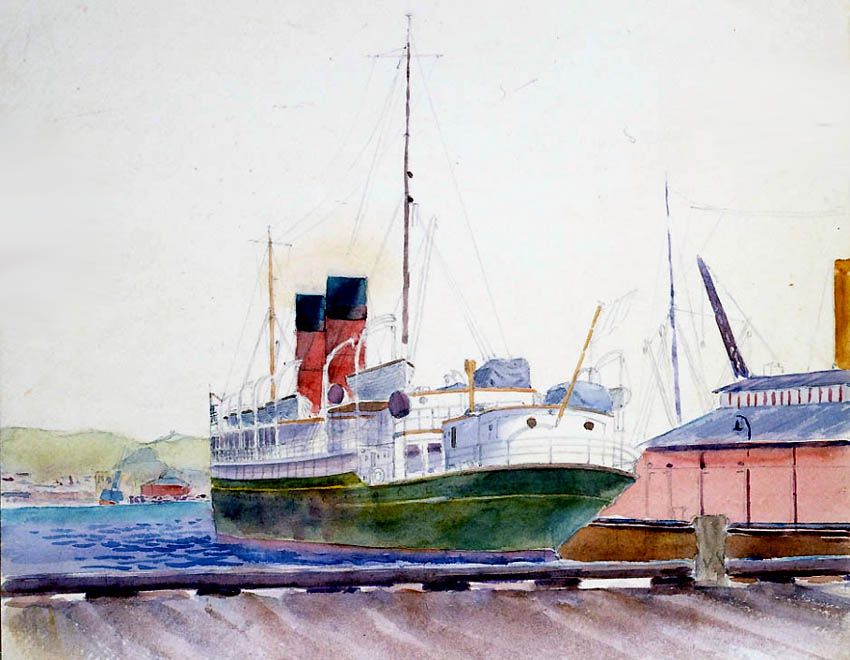
A
delightful watercolour by Arthur-Hayden with a stern view of S.S. Maori seen
alongside her
The Painting of the S.S.
Maori’ is © https://nzhistory.govt.nz/media/photo/painting-of-the-ferry%2C-maori - Ministry for Culture and Heritage
I watched them come, I watched them go, and I watched them die.”
************************
This notice covers all pages, although, and I have done my best to
ensure that all photographs are duly credited and that this notice is displaced
on each page, that is, when a page is updated!
